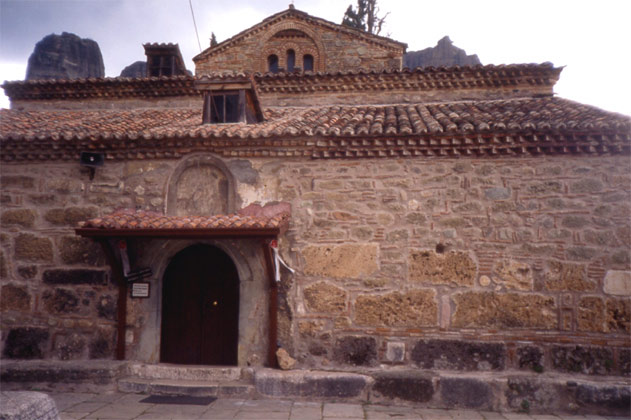ΜΕΤΕΩΡΑ |
Meteora
Meteora is a huge cluster of dark rocks rising out of Kalambaka, near the first hills of Pindos and Chassia. The monasteries of Meteora, which is built on top of some rocks, is now the second most important group of monasteries in Greece after Mount Athos. Of the thirty who have been historically, today, only seven of which 1988 are included in the world heritage list of UNESCO.
Installation of monasticism
The wild and inaccessible landscape has appropriate space for Christian hermits who settled in the region to date is not exactly known.
According to various opinions Byzantinologists allegedly began before the 11th century. Other historical information but said as a first settler Barnabas hermit who founded the 950-970 very old Cloister of the Holy Spirit. This was followed by the establishment of the Transfiguration (1020) by a Cretan monk Andronikos and in 1160 founded the Cloister drops or Doupiani. After 200 years the hermit Barlaam founded the Abbey of the Three Hierarchs and All Saints and later created the unknown priests Monasteries Holy Trinity, St. Stephen, the Visitation, the Roussano or arsenal, St. George Mandila, St. Nicholas Anapafsas of Our Lady of Mikanis of St. Theodore, St. Nicholas Bantova, the Apostles, St. Gregory, St. Anthony, the Almighty, the Holy Monastery of Prodromos Monastery of highest elevation, calligraphy, of Modesto, the chain , the Apostle Peter, Saint Demetrius, the Kallistratos, the Archangels and John Bounila.
The name Meteora attributed to the founder of the Monastery of the Great Meteoro, Agios Athanasios the Meteorite, which he called "Meteor" Platis Lithos which went first 1344. General monastic life Meteora since decreased during the decline and fall of Byzantine empire and the subsequent Ottoman conquest of Thessaly in 1393, however, by the late 15th century and the 16th century mainly Meteora to know their greatest prosperity, and established new single, universal and monastic buildings, which are adorned with unique art paintings .
Over the years the monastic state also began to strengthen with monks to reach its peak around the 17th century. However, since that time and begins to decline and today operate only monasteries Metamorphosis, Varlaam, St. Nicholas Anapafsas of Roussano of Holy Trinity and St. Stephen's, and some parts of some others, while others have disappeared.
Meteora, due to their morphology, offered during the Ottoman ideal retreat for monasticism and preserved cultural monuments and works of post-Byzantine art. In the early 19th century many monasteries were looted by the army of Ali Pasha.
In the 1920s carved stairways and tunnels in the rocks making the odd accessible from the nearby plateau so the traditional method of communication and supply with the single ladders, ropes, pulleys and baskets, gradually abandoned.












